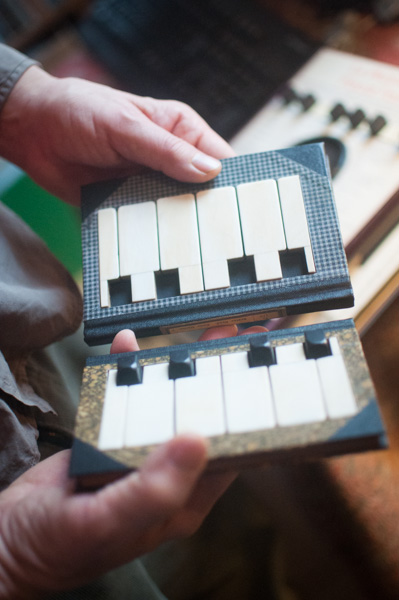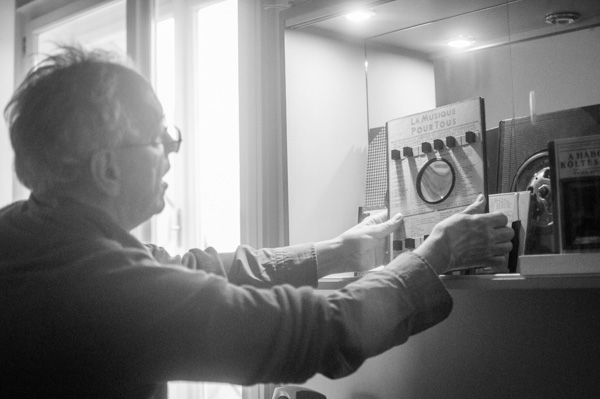Barabás Márton
“I learned to play piano. Most likely I listen to music in other way as people do lacking of music learning and solfeggio. We rented a pianino of the neighbor, my father bought it later. Being phillumenist, I went to a woodcutting workshop, practicing language lessons and swimming, and learning, I had no time to practice on piano.” A piano was a part of the middle-class home. Some of old instruments are destroyed, out of tuning. The shining polish is fading, the chords getting loose, the streamlined body standing on slim legs starts to die, and the ebony/ivory keyboard disintegrates. “
In his studio there is an apparently intact pianino, but we see some others in details around. Glancing around the studio, we have the feeling as the battered keys starts to reinvigorate the elaborate structure, the tiny, finely crafted wooden hammers dance on the stretched chords, and the sound of music commences from the robust body.
The instrument sounding takes us into an imaginary world. “ When I saw a thrown-away pianino in Kaposvár, I brought home some small elements of it. Months later, I painted my ‘A Cloud in Jeans’ picture on the lid of a thrown-away piano. Then I got the ‘served its time’ pianos in sequence. Gábor Presser, the musician took me to a downtown piano repair shop, where I have got many valuable mechanisms and keys, redundant and useless for them. “
Soon he begins to deal with space problems. As the piano, as an object, loses its real function, he creates an abstract, particular world. How can a random pile create a regular form? Thinking on our strange and uncertain world, how does the anarchy create order?
The disintegrated inner mechanism of a piano, deprived from its support is the chaos itself. Under the effect of the contemporary, repetitive music, he found the organizing principle in the geometry. The objects, lost their significance, align to life when fitted together in a repetitive rhythm. The spiral shape, the volute serves as support, having beginning and end, and where the dynamics of the growth is taking place before our eyes.
He reads the motion from the rodlets, stapled by wire. From the series of the monotonous movements he notes the hoofbeats of the riders on the Parthenon relief, so the audience can involuntarily hear the battle noise. In this way the work is more than a mere two-dimensional object, music-connected not only because of the instrumental parts.
The keyboards of rocking-cambered surface, as well as the fictitious music instruments appear both in the real space and in the pictures. Rocking would serve as a joint between the statue and picture. In the pictures the dynamics of the space and the motion appear, complemented with the rhythm of the colors. The elements of the pictures receive the light from a definite direction, as if being reflector-illuminated stages, recalling theatre placards of the thirties. The shadow of this direct light is strengthening the feeling of the space and motion.
The book objects are speaking on near-death state. To give a new chance to the pianos and the cover-lost books – there are some similarities. Even in this genre the main theme is the rhythm and the music. It is a rescue operation as well, a kind of cultural reworking.
What can attract an artist in saving the nearly fated books for the future? To preserve the history, science, thoughts, poetry, words on the paper, or the beauty of typography? It can be hard to define the feeling caused by the lenses fitted into the body of a book, stroller wheels, and piano keys. The artist reckons them as visual metaphors. He makes fake books from old printed pages. He makes a regular book, putting the very content into its body.
PREVIOUS: Köblitz Birgit
NEXT: Hegyvári Bernadett



















USER COMMENTS ( 0 )
Follow Comments via RSS feed. Trackback Comments from your website.